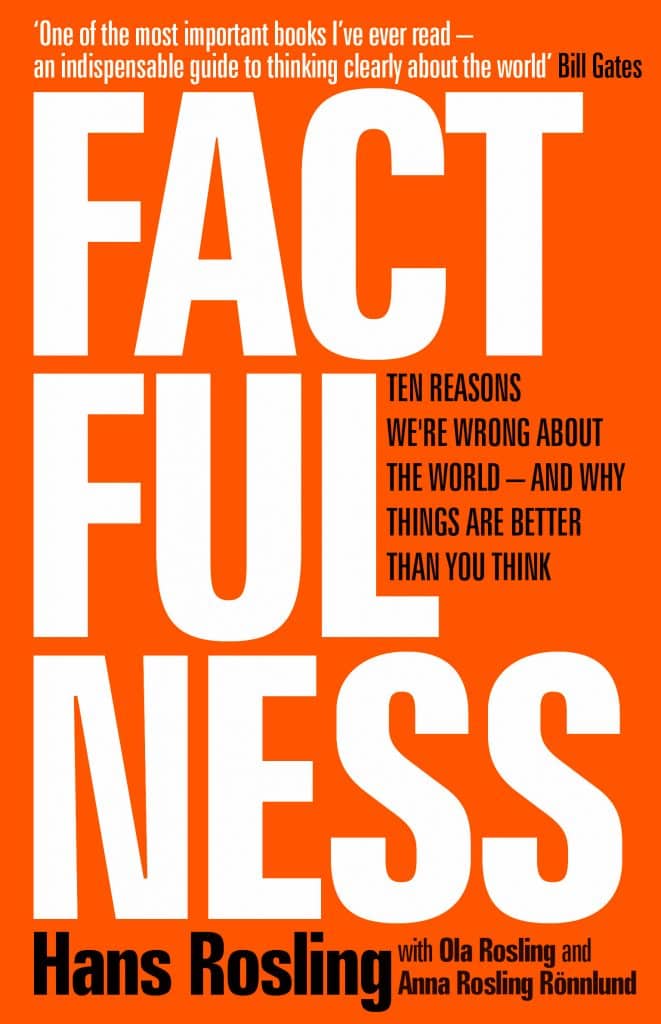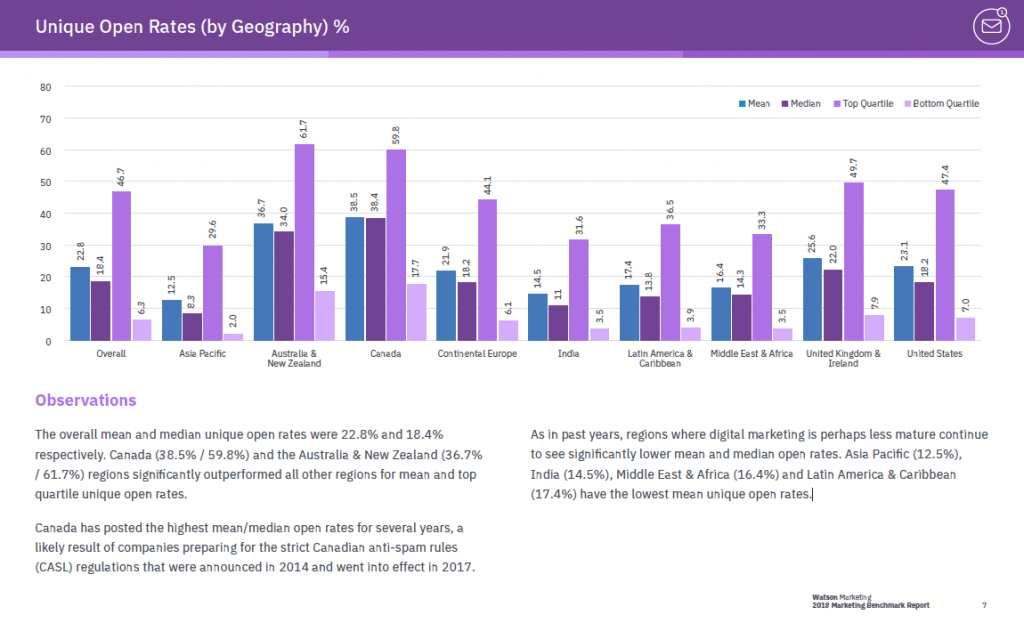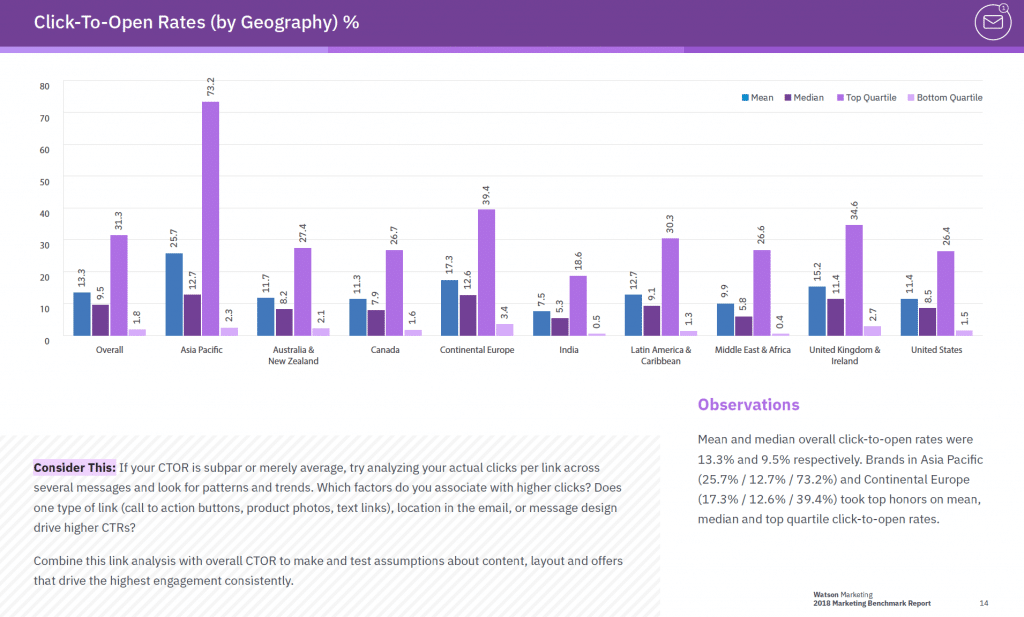Every now and then I stumble across an amazing book. Factfulness is one of them.
“One of the most important books I’ve ever read — an indispensable guide to thinking clearly about the world.” – Bill Gates
“Forming your worldview by relying on the media would be like forming your view about me by looking only at a picture of my foot.” – Hans Rosling
If you have not heard about Hans Rosling, I suggest you start with his amazing TED talks.
Before you do though, ask yourself the following question:
Which of these countries has the highest child mortality?
Sri Lanka <> Turkey
Poland <> South Korea
Malaysia <> Russia
Pakistan <> Vietnam
Thailand <> South Africa
Have you done better than a Chimpanzee?
Have a look at these TED talks to compare your answers:
The classic talk he did is here:
And to quote Hans: the problem is not ignorance, but preconceived ideas…
This can have a very negative impact on your business. “There are 5 billion potential consumers out there, improving their lives in the middle, and wanting to consume shampoo, motorcycles, menstrual pads, and smartphones. You can easily miss them if you go around thinking they are poor.”
Do we have preconceived ideas about marketing too? Would we perform better than Chimpanzees in a test about our own marketing efforts?
So having read the book on a recent trip through Asia Pacific (India, Indonesia, Singapore and Thailand) and talking to many marketers in these different regions made me wonder: can Hans Rosling’s approach also be applied to marketing? In comparison to the example Hans gives on the Chimpanzee based on global economics, I wonder if some marketers are performing in a very similar way?
I give you an example: most of the markets I visit during my travels all function on the same basis: marketers send marketing messages based on product initiatives. The results?
22.8% open rates. Not bad, but that means that 77.2% of the overall customer base globally do not even open the messages they get. Both extreme examples globally I am able to visit during my work trips: Australia & New Zealand (good) and India (bad). The Click-To-Open rate is a measure I like very much – as it shows the relevancy of the messages the marketers send: 11.7% in ANZ vs 7.5% in India.
Given the above numbers you would think that marketers are trying to change their behaviour? I am not too sure about that though. Batch based mass-email marketing still is a common thread across a lot of markets. It looks to me as if a lot of data driven marketing today could benefit from Hans Rosling’s approach. So let me give you some examples Hans is listing in his book and how I think it applies to marketing, based on my own experiences.
Mind the Gap and Check Your Size Instinct
During my time in the marketing department at a company in Austria, my colleagues and I ran a test. Applying a classic ‘gap mind’, we divided our customer base into active and inactive customers (although we were aware of many more sub groups to be honest). For years we defined the inactivity period of customers as 6 months. After which we tried to reactivate them with all kinds of messages – based on product. As with the above results, we had all kind of data showing us that our response rates were minuscule – or in other words: single digit %. So we tried to figure out what we could do differently. After having run the test we realised that the inactivity period had to be much shorter – 2 weeks to be precise. The right offer within 14 days increased our retention rate dramatically. It also had to be the right type of offer – as not every offer would work. The offer had to be very personal. We had to move to a behaviour based marketing approach to cater the right message to the customer within a 14 day inactivity period to keep them interested. Sounds basic reading it, but it took us quite some testing to proof this method as being far superior to any other approach.
Given these results we were ecstatic. We had proven that based on our tests – the response of our customers to our marketing would increase significantly. If we served them the right offer at the right time – based on their behaviour, instead of focusing on product driven messaging, we could improve our marketing performance. However, during the same period our marketing department kept sending marketing messages based on product releases with low single digit response rates. Why? “Because we have always done it like that.” I still very sadly remember the effort my colleagues and I had to invest into a marketing initiative for a new product, which only interested – wait for it – 13 people. The same amount of effort we had to invest into campaigns getting far superior responses – based on behavioural targeting.
Hans describes in his book (chapter 5) the Size Instinct. I would love to apply some of his suggestions to the marketing department. When looking at the numbers, question your assumptions. Hans Rosling suggests you Compare and Divide. In other words, compare the results you are getting and look at the rates. For instance: is your company even looking at the Click-To-Open Rates? How much time does your marketing department spend on campaigns – and how do they perform in comparison to other efforts? Do you focus on the number of emails you send, or on the real conversion rate you are getting? Are you retargeting responders automatically to further improve their experience?
A financial services company I work with in New Zealand is able to drive conversion through their email marketing up to 16% – in comparison to a similar sized company in India – where they are below 6%. The difference? One is focused on the large numbers (messages they send) and the other one only on 1 thing: value add to their customers.
“Be curious about new information that doesn’t fit, and information from other fields.” – Hans Rosling
I had the advantage during my time as a marketer to work very closely with my colleagues from the analytics department. We built everything from bubble-charts to trend analysis and slowly, but steadily transformed our direct marketing efforts to a more value driven approach. We even ran tests to see if weather patterns correlate to responses – 8 years ago. We tested a lot of our ‘given assumptions’ and questioned our existing approaches.
Reading Factfulness reminded me to constantly test my world view and made me question how I see marketing today. Visiting such diverse countries like India, South Korea, Singapore, Australia and New Zealand and many others has shown me the importance of understanding the world – to not act like Chimpanzee.
So how much do you know about the world?
1. In all low-income countries across the world today, how many girls finish primary school?
A. 20%
B. 40%
C. 60%
2. Where does the majority of the world population live?
A. Low income countries
B. Middle income countries
C. High income countries
3. In the last 20 years the proportion of the world population living in extreme poverty has?
A. almost doubled
B. remained more or less the same
C. almost halved
4. What is the life expectancy of the world today?
A. 50 years
B. 60 years
C. 70 years
5. There are 2 billion children in the world today aged 0-15 years old, how many children will there be in year 2100 according to the United Nations?
A. 4 billion
B. 3 billion
C. 2 billion
6. The UN predicts that by 2100 the world population will have increased by another 4 billion people, what is the main reason?
A. There will be more children aged below 15
B. There will be more adults aged 15-74
C. There will be more very old people aged 75 and older
7. How did the number of deaths per year from natural disasters change over the last 100 years?
A. More than doubled
B. Remained about the same
C. Decreased to less than half
8. There are roughly 7 billion people in the world today, which options more accurately represents where they live?
A. 1 billion in Europe, 4 billion in Asia, 1 billion in Africa and 1 billion in America.
B. 1 billion in Europe, 3 billion in Asia, 2 billion in Africa and 1 billion in America
C. 1 billion in Europe, 3 billion in Asia, 1 billion in Africa and 2 billion in America
9. How many of the world’s 1 year old children today have been vaccinated against some diseases?
A. 20%
B. 50%
C. 80%
10. Worldwide, 30 year old men have spent 10 years in school on average, how many years have women of the same age spent in school?
A. 9 years
B. 6 years
C. 3 years
11. In 1996 tigers, giant pandas and Black Rhinos were all listed as endangered, how many of these three species are critically endangered today?
A. 2 of them
B. 1 of them
C. none of them
12. How many people in the world have some access to electricity?
A. 20%
B. 50%
C. 80%
13. Global climate experts believe that over the next 100 years the average temperature will on average?
A. get warmer
B. remain the same
C. get colder
This little test serves as a baseline to how right or wrong our preconceived ideas are about the world today. You can find the answers at the bottom. How much did you get right?
To not rely on what you think is right too much, I have also written a blog about: “Making Better Decisions”
Answers: 1C 2B 3C 4C 5C 6B 7C 8A 9C 10A 11C 12C 13A



